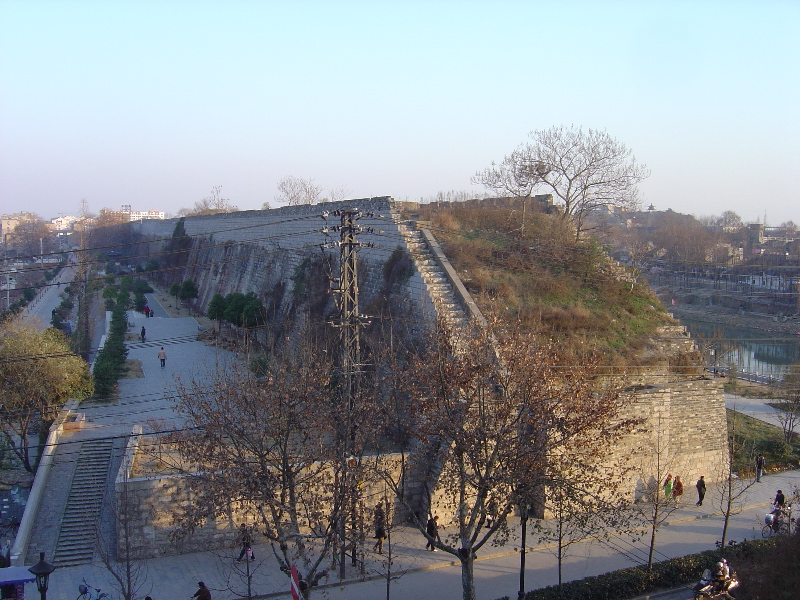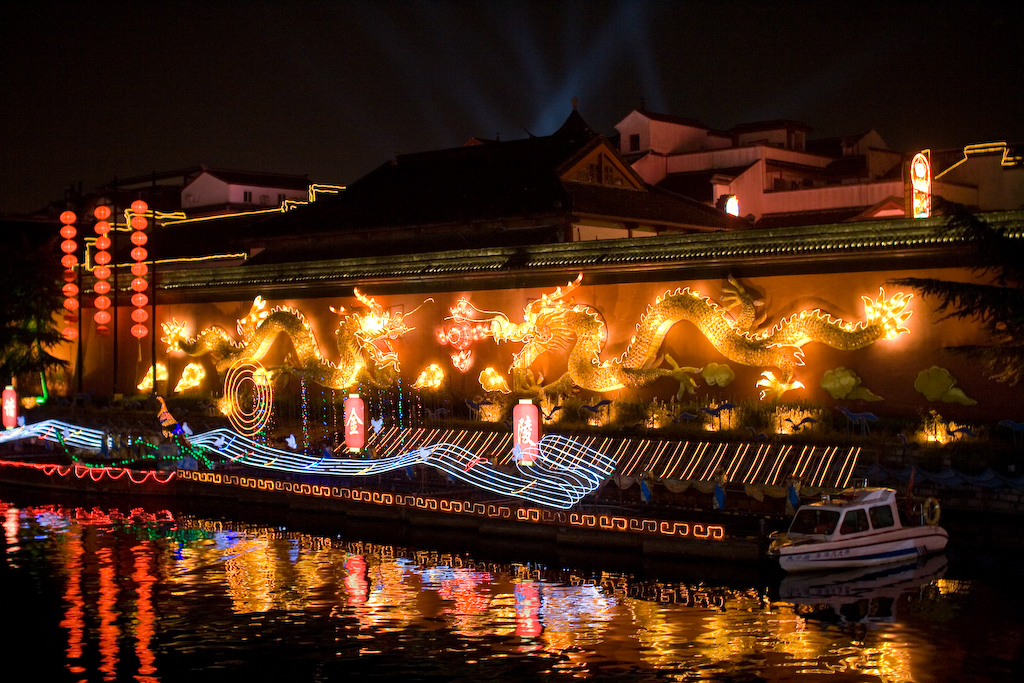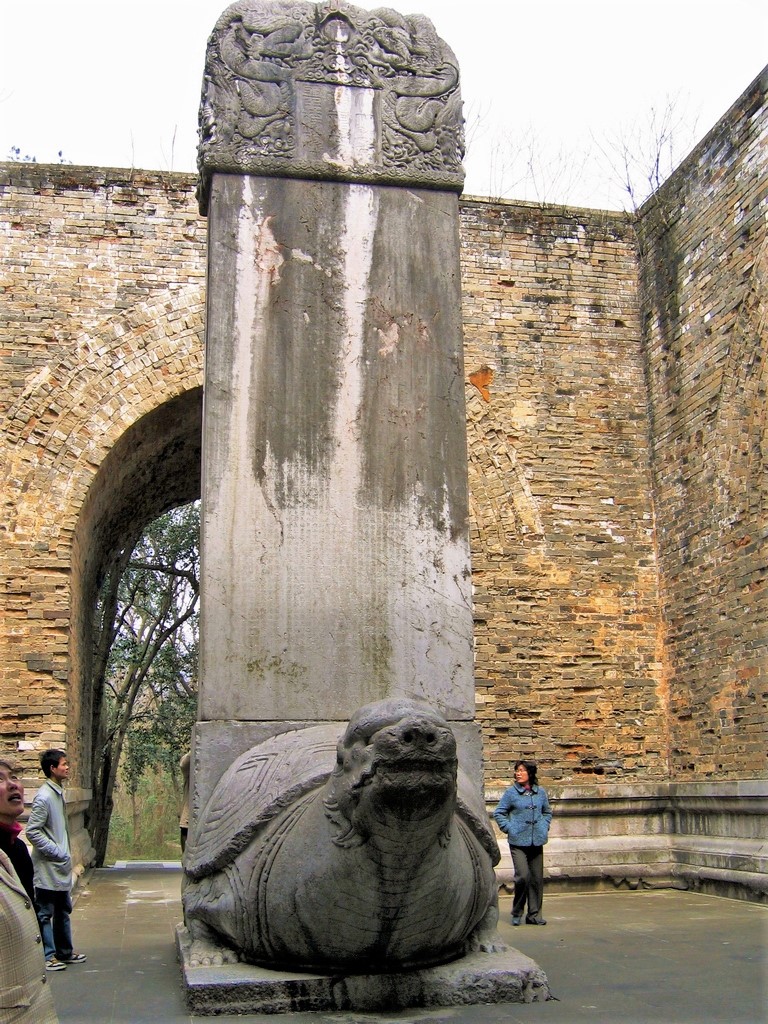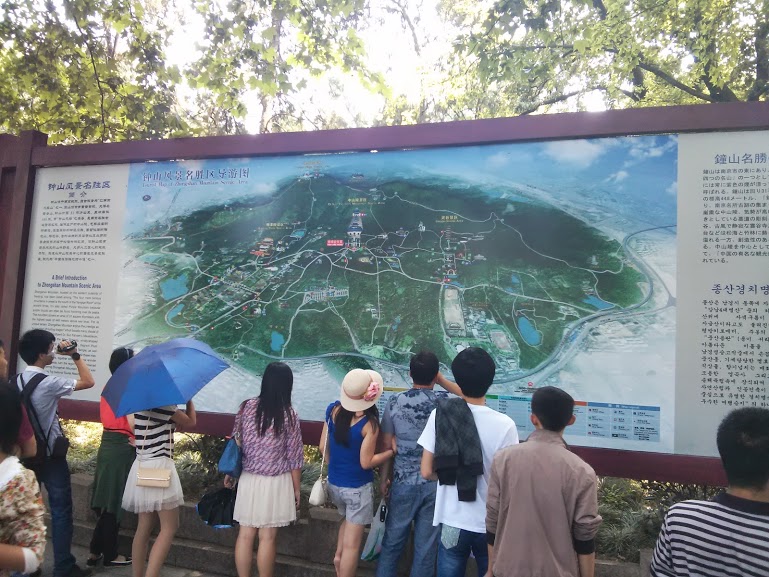|
Nanjing
Nanjing (; , Mandarin pronunciation: ), Postal Map Romanization, alternately romanized as Nanking, is the capital of Jiangsu Provinces of China, province of the China, People's Republic of China. It is a sub-provincial city, a megacity, and the List of cities in China by population, second largest city in the East China region. The city has 11 districts, an administrative area of , and a total recorded population of 9,314,685 . Situated in the Yangtze River Delta region, Nanjing has a prominent place in Chinese history and Chinese culture, culture, having served as the historical capitals of China, capital of various Dynasties in Chinese history, Chinese dynasties, kingdoms and republican governments dating from the 3rd century to 1949, and has thus long been a major center of culture, education, research, politics, economy, transport networks and tourism, being the home to Port of Nanjing, one of the world's largest inland ports. The city is also one of the fifteen sub-provin ... [...More Info...] [...Related Items...] OR: [Wikipedia] [Google] [Baidu] |
Nanjing Municipal People's Congress
Nanjing (; , Mandarin pronunciation: ), alternately romanized as Nanking, is the capital of Jiangsu province of the People's Republic of China. It is a sub-provincial city, a megacity, and the second largest city in the East China region. The city has 11 districts, an administrative area of , and a total recorded population of 9,314,685 . Situated in the Yangtze River Delta region, Nanjing has a prominent place in Chinese history and culture, having served as the capital of various Chinese dynasties, kingdoms and republican governments dating from the 3rd century to 1949, and has thus long been a major center of culture, education, research, politics, economy, transport networks and tourism, being the home to one of the world's largest inland ports. The city is also one of the fifteen sub-provincial cities in the People's Republic of China's administrative structure, enjoying jurisdictional and economic autonomy only slightly less than that of a province. Nanjing has been ... [...More Info...] [...Related Items...] OR: [Wikipedia] [Google] [Baidu] |
Jiangsu
Jiangsu (; ; pinyin: Jiāngsū, alternatively romanized as Kiangsu or Chiangsu) is an eastern coastal province of the People's Republic of China. It is one of the leading provinces in finance, education, technology, and tourism, with its capital in Nanjing. Jiangsu is the third smallest, but the fifth most populous and the most densely populated of the 23 provinces of the People's Republic of China. Jiangsu has the highest GDP per capita of Chinese provinces and second-highest GDP of Chinese provinces, after Guangdong. Jiangsu borders Shandong in the north, Anhui to the west, and Zhejiang and Shanghai to the south. Jiangsu has a coastline of over along the Yellow Sea, and the Yangtze River passes through the southern part of the province. Since the Sui and Tang dynasties, Jiangsu has been a national economic and commercial center, partly due to the construction of the Grand Canal. Cities such as Nanjing, Suzhou, Wuxi, Changzhou, and Shanghai (separated fro ... [...More Info...] [...Related Items...] OR: [Wikipedia] [Google] [Baidu] |
Xuanwu Lake
Xuanwu Lake () is located in Xuanwu District in the central-northeast part of Nanjing, Jiangsu. It is near the Nanjing Railway Station and Jiming Temple. Five islands within the lake are interconnected by arched bridges. Within the park are temples, pagodas, pavilions, gardens, teahouses, restaurants, entertainment venues, a small zoo, and other attractions. Its main entrance is the Xuanwu Gate. History The lake was formed, according to geologists, when tectonic plates shifted and created Mount Yanshan. A legend is that Emperor Sun Quan (182–252) settled in the Nanjing area and he had the lake created and filled with water. The lake was named for a black dragon, believed to be a water god by Chinese Taoists, from a Southern dynasty (420-859) legend. The dragon, seen in the lake, looked like a tortoise and a snake and was named Xuanwu, meaning black tortoise. [...More Info...] [...Related Items...] OR: [Wikipedia] [Google] [Baidu] |
City Wall Of Nanjing
The City Wall of Nanjing () was designed by the Hongwu Emperor (1328–1398) after he founded the Ming Dynasty (1368–1644) and established Nanjing as the capital in 1368. To consolidate his sovereignty and defend the city against coastal pirates, he adopted the suggestions of advisor Zhu Sheng to build a higher city wall, to expand strategic food reserve and to postpone the coronation. The construction of the wall required the labor of 200,000 workers over twenty-one years to complete. Around 7 million cubic metres of earth were shifted. The City Wall of Nanjing was among the largest city walls ever constructed in China. The enclosed Nanjing City is about 55 square kilometers. History The first Ming emperor was proclaimed in 1368 and a great deal of preparation was done prior to this to have an imperial city and all the imperial trappings ready. The name of the city was changed again to Yingtianfu (responding to heaven). A "new city" was built to the east of the old one to b ... [...More Info...] [...Related Items...] OR: [Wikipedia] [Google] [Baidu] |
Nanjing Fuzimiao
Nanjing Fuzimiao () or Fuzimiao (), is a Confucius Temple and former site of imperial examination hall located in southern Nanjing City on banks of the Qinhuai River. It is now a popular tourist attraction with pedestrian shopping streets around the restored temple buildings. Nanjing Confucius Temple is located in Qinhuai District, Nanjing City, on the north bank of the Qinhuai River Gongyuan Street, Jiangnan Gongyuan west, located in the Confucius temple Qinhuai scenery belt core area, namely Nanjing Confucius Temple, Nanjing Confucian Temple, Wenxuanwang Temple, for the place of worship and sacrifice of Confucius, It is the first national highest institution of learning in China, one of the four major temples of literature in China, the hub of ancient Chinese culture, the place where Nanking history and humanities gather and is not only the cultural and educational centre of Nanjing in the Ming and Qing dynasties but also the cultural and educational architectural complex that ... [...More Info...] [...Related Items...] OR: [Wikipedia] [Google] [Baidu] |
Ming Xiaoling
The Ming Xiaoling () is the mausoleum of the Hongwu Emperor, the founder of the Ming dynasty. It lies at the southern foot of Purple Mountain, located east of the historical centre of Nanjing. Legend says that in order to prevent robbery of the tomb, 13 identical processions of funeral troops started from 13 city gates to obscure the real burying site. Asian Historical Architecture The construction of the mausoleum began during the Hongwu Emperor's life in and ended in , during the reign of his son the Yongle Emperor, with a huge expenditure of resources involving 100,000 labourers. The original wall of the mausoleum was more than 22.5 kilometres long. The mausoleum was built under heavy guard of 5,000 troops. Layout and monuments Great golden gate and Square city Da Jin Men and Sifangcheng. One enters the site through the monumental Great Golden Gates (''Da Jin Men''), and is soon faced by a giant stone tortoise ('' bixi''), which resides in the ''Sifangcheng'' ("Square city ... [...More Info...] [...Related Items...] OR: [Wikipedia] [Google] [Baidu] |
Nanjing Olympic Sports Center
The Nanjing Olympic Sports Centre Stadium () is used mostly for football as well as for other sport of athletics. It is located in Hexi New Town, Nanjing, Jiangsu, China, and covers an area of 89.6 hectares, with a total construction area of about 401,000 square meters. Served as the main venue for the 2014 Summer Youth Olympics and for the 2005 National Games of China, the Nanjing Olympic Sports Centre is the largest social utility project by the People's Government of Jiangsu Province. The 4 billion yuan Olympic standard complex was designed by HOK Sport (now Populous). The Olympic Park includes a 61,443 seat multiuse stadium (Nanjing Olympic Sports Centre Stadium), 13,000 seat gymnasium, 4,000 seat FINA standard Aquatic complex, 4,000 seat Tennis Centre, 23,000 square meter Information Technology Centre, and various recreational sports fields. Stadium The stadium costed 8.698 million yuan with the construction area of 136.34 thousand square meters, with 61,443 seats. It ... [...More Info...] [...Related Items...] OR: [Wikipedia] [Google] [Baidu] |
Sun Yat-sen Mausoleum
Dr. Sun Yat-sen's Mausoleum () is situated at the foot of the second peak of Purple Mountain (Nanjing), Purple Mountain in Nanjing, China. Construction of the tomb started in January 1926, and was finished in spring of 1929. The architect was Lü Yanzhi, who died shortly after it was finished. His representative and project partner was his close friend Lu Yanzhi, Huang Tanpu. History Dr. Sun was born in Guangdong province of China on 12 November 1866, and died in 1925 in Beijing, China. On 23 April 1929, the Chinese government appointed He Yingqin to be in charge of laying Dr. Sun to rest. On 26 May, the coffin departed from Beijing, and on 28 May, it arrived in Nanjing. On 1 June 1929, Dr. Sun was buried there. Sun, considered to be the "Father of Modern China" both in mainland China and in Taiwan, fought against the imperial Qing Dynasty, Qing government and after the Xinhai Revolution, 1911 revolution ended the monarchy, and founded the Republic of China (1912–1949), Repu ... [...More Info...] [...Related Items...] OR: [Wikipedia] [Google] [Baidu] |
Jiming Temple
The Jiming Temple () is a renowned Buddhist temple in Nanjing, Jiangsu, China. One of the oldest temples in Nanjing, it is located in the Xuanwu District near Xuanwu Lake.Lonely Planet. Lonely Planet Jiangsu: Chapter from China Travel Guide'. Lonely Planet; 1 June 2012. . PT14. History The temple, which literally means "rooster crowing" was first constructed in 527 during the Liang dynasty and has been destroyed and reconstructed many times. The existing temple was initially constructed during the Ming dynastyChung Wah Chow; David Eimer; Carolyn B. Heller. China'. Lonely Planet; 2009. . p. 283. during the reign of the Hongwu Emperor in 1387.Nanjing Scenic Spots Meet China. It was destroyed during the |
Purple Mountain (Nanjing)
Purple Mountain or Zijin Shan () is located on the eastern side of Nanjing in Jiangsu province, China. It is 448.2 m (1467 ft) high. Its peaks are often found enveloped in purple and golden clouds at dawn and dusk, hence its name. A small mountain with an area of about 20 square kilometers (4,900 acres), the altitude of Purple Mountain at the top and foot of the mountain is about 449 m and 20 m respectively. The annual average rainfall is 1,000 mm to 1,050 mm, and the average annual sunshine time is about 2,213 hours. Purple Mountain is a mountain related to many historical events of both ancient and modern China. It was originally known as Bell Mountain () and also became known as Mount Jiang () after Sun Quan named Jiang Ziwen, an Eastern Han official whose spirit was said to haunt the site, as the mountain's god during the Three Kingdoms era. The name ''Zijin'' () means "copper" - when copper is pure, it appears purple in color, so in Chinese, it is also c ... [...More Info...] [...Related Items...] OR: [Wikipedia] [Google] [Baidu] |
Provinces Of China
The provincial level administrative divisions () are the highest-level administrative divisions of China. There are 34 such divisions claimed by the People's Republic of China, classified as 23 provinces (), five autonomous regions, four municipalities and two special administrative regions. The political status of Taiwan Province along with a small fraction of Fujian Province remain in dispute; those are under separate rule by the Republic of China, which is usually referred to as "Taiwan". Every province on Mainland China (including the island province of Hainan) has a Chinese Communist Party (CCP) provincial committee (), headed by a secretary (). The Committee Secretary is effectively in charge of the province, rather than the governor of the provincial government. The same arrangement exists for the autonomous regions and municipalities. Types of provincial level divisions Province The government of each standard province () is nominally led by a provincial c ... [...More Info...] [...Related Items...] OR: [Wikipedia] [Google] [Baidu] |
Han Liming
Han Liming (; born September 1964) is a Chinese politician who has been communist party secretary of Nanjing, the top political position in the city, since June 2021. She was a delegate to the 11th National People's Congress and is a delegate to the 13th National People's Congress. Early life and education Han was born in Changzhou, Jiangsu, in September 1964. She graduated from Zhenjiang Normal School as well as Zhenjiang Shipbuilding College. She began graduate work at Southeast University in 1997 and the Party School of CPC Jiangsu Provincial Committee in 2001. Career Han entered the workforce in August 1984, and joined the Communist Party of China (CPC) in April 1986. She was promoted to be deputy communist party secretary of Zhonglou District in April 2002, and soon assigned to the similar position in Wujin District in December of that same year. She concurrently held the vice governor position there. She became deputy communist party secretary and mayor of Liyang ... [...More Info...] [...Related Items...] OR: [Wikipedia] [Google] [Baidu] |






